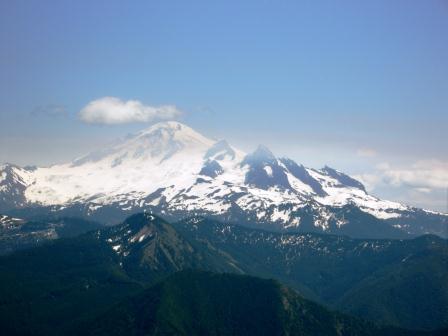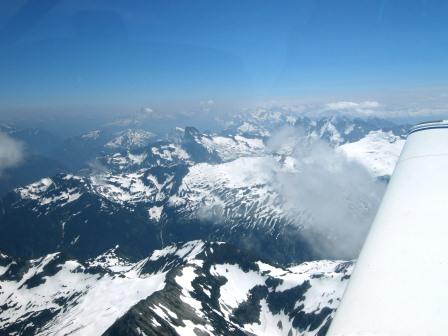Flying the Edge of America
Bellingham and the Cascade Mountains, Washington
When Julia and David departed Victoria, the skies were absolutely clear, save for a veil of low-lying mist that shrouded the many small islands scattered between the U.S. and Canada. On landing back in the U.S. at Bellingham International Airport, they underwent customs clearance—an experience far smoother than David had anticipated. He had worried about the complexities of leaving and re-entering the country with Matilda, their trusty aircraft, but both Canadian and U.S. customs agents greeted them with professionalism and friendliness. The officer at Bellingham, intrigued by their ambitious flight around America, reassured Julia that their aircraft seemed more than capable of completing the journey. His only concern was whether their finances would survive the adventure.

David was relieved to see clear skies, as ahead lay the formidable Cascade Mountain Range. Since the earliest stages of trip planning, this leg had been his biggest concern. The tallest volcanic peak, Mount Rainier, stands at 14,411 feet—far beyond Matilda’s maximum altitude, even when empty. They had tested Matilda’s limits up to 11,500 feet, so their route carefully wove between lower terrain, avoiding the highest peaks. Given the slow climb rate of their aircraft, David had factored ascent time into their flight plan. But fortune was on their side—clear skies, mild winds, and perfect conditions. After enduring persistent bad weather since Oakland, their luck felt almost miraculous. Julia took her prescribed medication to steady herself before the flight.

High mountain flights come with inherent dangers—winds create swirling air masses over jagged peaks, known as rotors. When fast-moving winds interact with ridgelines, violent updrafts and downdrafts can occur. Aircraft caught in these turbulent forces can gain or lose thousands of feet within minutes. A plane without enough engine power to resist a downward pull risks being sucked toward the ground. In such vast mountains, Matilda felt as insignificant as a feather in the wind.
The flight began smoothly. At 11,500 feet, David set cruise mode and marveled at the snow-capped peaks surrounding them. Below stretched endless uninhabited forests—stunning but sobering. If their engine failed, there was no safe landing site. Survival in such isolated wilderness would be nearly impossible. These thoughts plagued David, prompting a constant scan for potential emergency landings. But no viable option existed.
Then David noticed Matilda's nose angled downward—yet they weren’t descending. Instruments showed normal readings, except their ground speed was unexpectedly high. It soon became clear—they had entered a rotating air mass coming off a ridgeline. Matilda’s autopilot, rigid in its programming, adjusted the aircraft’s pitch to maintain altitude. With updrafts forcing them higher, the autopilot angled the nose down to counteract the effect. David immediately realized that they would soon reach the downward side of the rotation—and when they did, things got worse.
As Matilda entered a powerful downdraft, the autopilot raised her nose drastically in an attempt to fight gravity. But at 11,500 feet, where air is thin, the aircraft lacked sufficient power to resist. Their ground speed dropped as Matilda struggled against the pull. The autopilot, unable to adjust properly, overcompensated, worsening the situation. David swiftly disengaged it, taking manual control.
Julia was unsure how she endured the flight—perhaps sheer determination, or more likely, the valium prescribed by her doctor at Kaiser Oakland. Mount Rainier, the highest peak in the range, is also an active volcano, though they didn’t stop to explore it. However, from above, the snow-draped crags and rugged beauty of the Cascades made them confident in recommending Mount Rainier National Park as a must-visit destination.
Continue the adventure in my next excerpt from Flying the Edge of America.